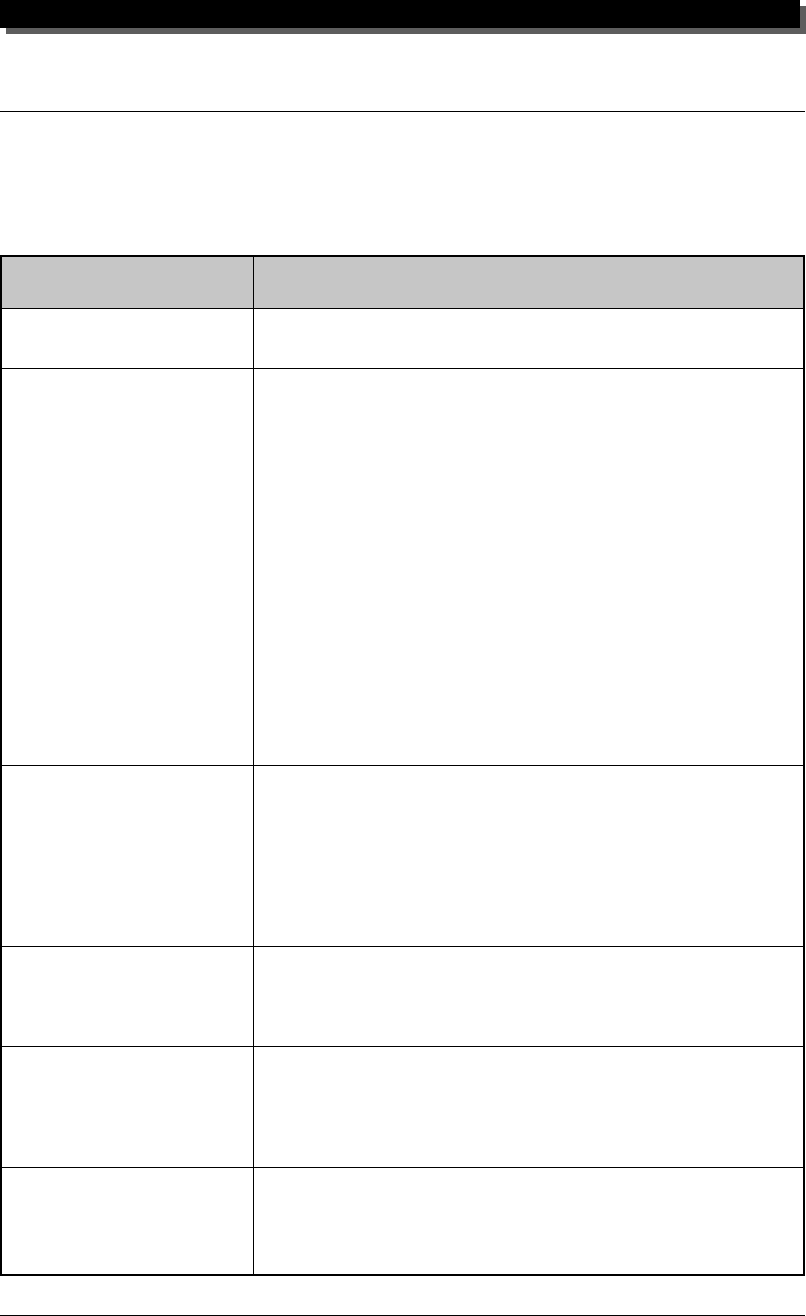
APPENDIX
127
Troubleshooting
Even though the MU80 is exceptionally easy to use, it may occasionally
not function as you expect it to. If that happens, check the possible prob-
lems and solutions below before assuming that the instrument is faulty.
Possible Cause and Solution
If you are using an AC adaptor, check that the adaptor is properly plugged into both
the AC outlet and the MU80 (See page 12.)
Check that:
● The panel volume control is set to an appropriate level.
● Other volume-related parameters are set to appropriate levels. (See Volume and
Expression in the Single Part controls, pages 38…39, and Master Volume and
Master Attenuator in the All Part controls, page 42.)
● Mute or Solo are not active. (See page 23.) If a Part is being muted, or an empty
Part is being soloed, you may not get any sound.
● The Variation effect settings are appropriate. No sound will be output at all if
Variation Connection is set to INS (page 91), Variation Send is turned on for the
Part (page 40), and NO EFFECT is selected for the Variation Type (page 90).
The easiest solution in such a case is to turn off Variation Send for the Part.
● The EG Attack Time (page 47) is appropriately short, for short percussive
sounds.
● The Velocity Sensitivity Offset (page 56) is appropriate.
● The Note Limit Low and Note Limit High (page 57) settings are appropriate. If
the former is set higher than the latter, no sound will be output.
● The Velocity Limit Low and Velocity Limit High (page 59) settings are appropri-
ate. If the former is set too high and the latter too low, no sound may be output.
Check all MIDI connections, making sure that the MIDI OUT of the external device
is connected to the MIDI IN of the MU80, and that the MIDI IN of the external device
is connected to the MIDI OUT of the MU80. (See pages 28…29.) Or, if you are using
the TO HOST terminal with a computer, make sure that the terminal is properly con-
nected to the computer and that the HOST SELECT switch is properly set for your
particular computer. (See pages 26…28.) Also, make sure that you have turned on the
connected MIDI instrument or computer before turning on the MU80. If you haven’t,
simply turning the MU80 off and back on again may solve the problem.
The maximum polyphony of the MU80 may be exceeded. The MU80 can play no
more than 64 notes at once. (Though 64 notes may seem to be more than enough,
you may run short when playing a connected keyboard along with some densely
arranged song data.)
Check all Reverb-, Chorus- and Variation-related controls: Reverb Send, Chorus Send
and Variation Send in Single Part controls (pages 39…40); Reverb Return, Chorus
Return and Variation Return (when Variation Connection is set to SYS) in All Part
controls (pages 42…43). Also check the individual effect settings; if no Type has been
selected, or if the parameter settings are too low, there may be no effect sound.
Make sure that the appropriate A/D Part (A1 or A2) has been turned on and that the
A/D INPUT control is set to an appropriate level. Also for best results, make sure
that the A/D input type (Mic, Guitar, Keyboard, Audio) is set to match the input
you are using.
Problem
No power.
No sound.
No sound when playing the MU80
from a computer, sequencer or
external keyboard.
Notes are cut off or omitted.
Reverb, Chorus and/or Variation
effects cannot be heard.
The A/D input sound (mic, guitar,
etc.) cannot be heard.


















